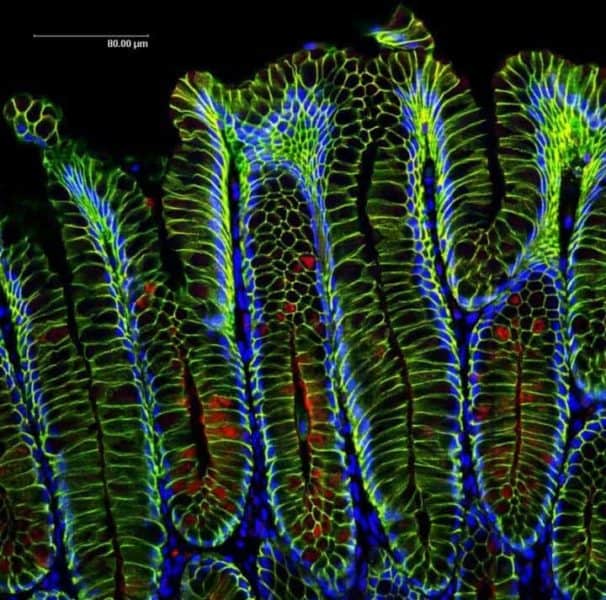Cancer of the stomach is one of the deadliest cancers, in large part because people tend to be diagnosed very late in the game.
Scientists have long suspected that stomach cancer is mainly caused by a bacteria, carried by about half of all people, called Helicobacter pylori.
Unlike viruses, which transfer part of their DNA to infected cells, bacteria don’t, so how H. pylori triggers cancer has been an open question. Now German researchers along with colleagues at Standford University think they know the link between the bacteria and the disease. The answer appears to be that the bacteria trigger stem cells in the stomach to go into mass duplication mode.
Said researcher Michael Sigal: “Our findings show that an infectious bacterium can increase stem cell turnover…. Since H. pylori causes life-long infections, the constant increase in stem cell divisions may be enough to explain the increased risk of carcinogenesis observed.”
Added Thomas Meyer, of the Max Planck Institute for Infection Biology in Berlin: “Our new findings shed light on the intriguing ways through which chronic bacterial infections disturb tissue function and provide invaluable clues on how bacteria, in general, may increase the risk of cancer.”
Researchers have known for decades that certain viruses can cause cancer — think human papilloma virus (HPV) and cancers of the vagina, vulva, penis, anus, rectum, and oropharynx. Viruses do so by transferring oncogenes into the host cell DNA. It’s even been known that some bacteria can also trigger cancer, but not how.
Sigal, Meyer and their teams thought it had something to do with stem cells in the glands that line the inside of the stomach, which are constantly replacing stomach cells “from the bottom up.” The researchers studied transgenic mice to trace cells expressing particular genes, as well as all their daughter cells. They found the stomach glands have two different stem cell types, one of which is pushed into overdrive by exposure to the bacteria, while the other is quieted.
The findings are published in the current issue of Nature.

